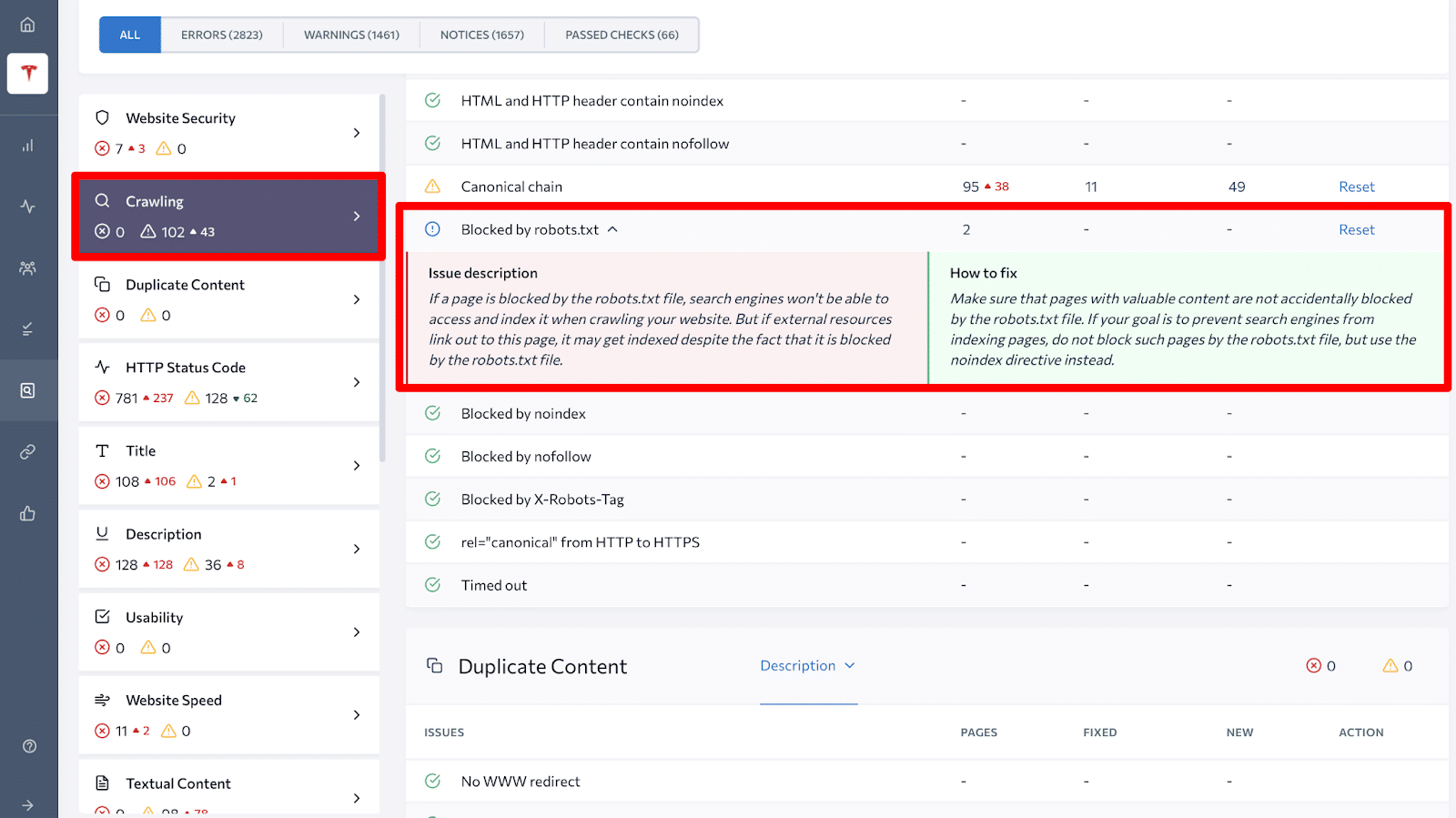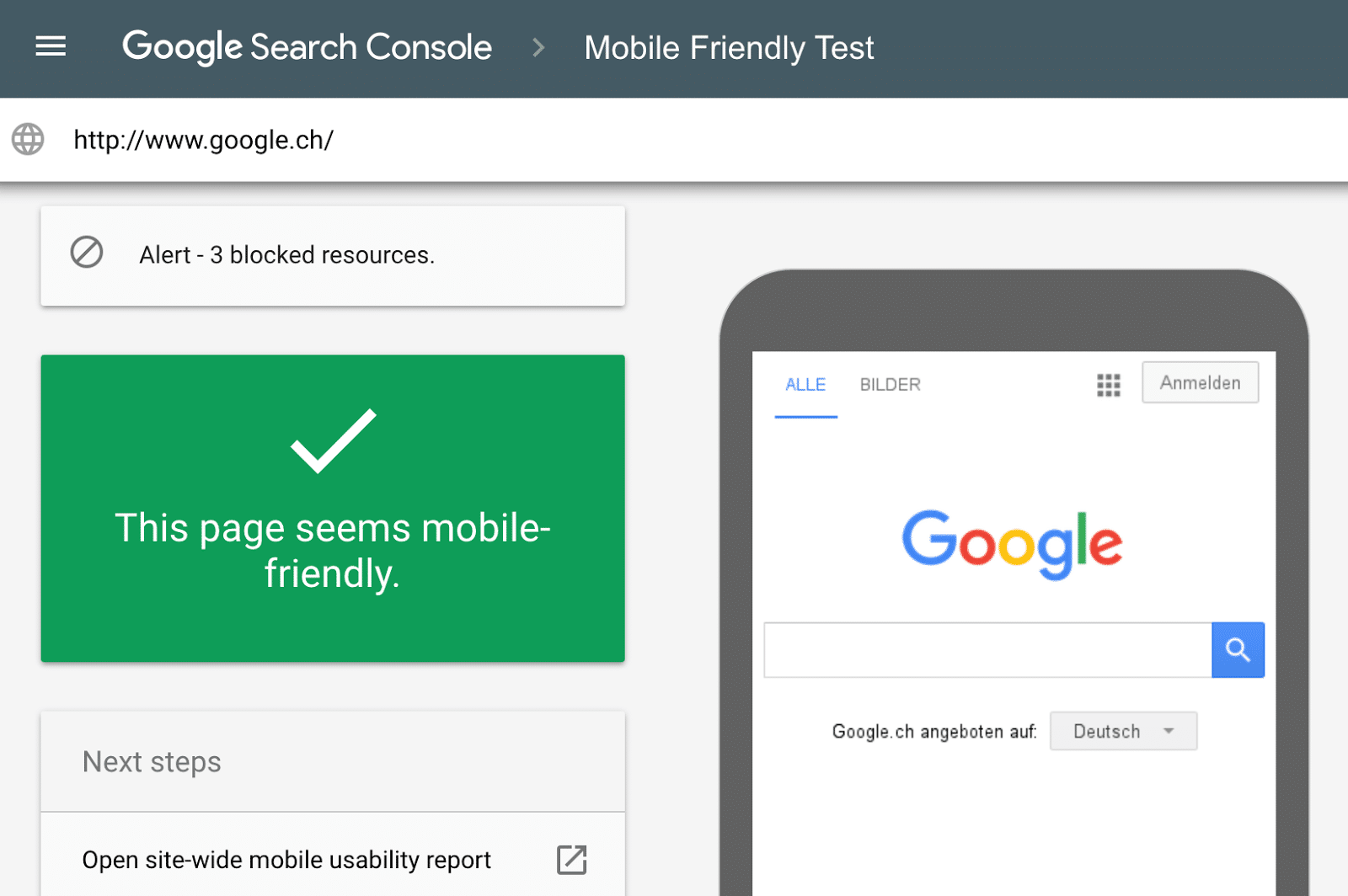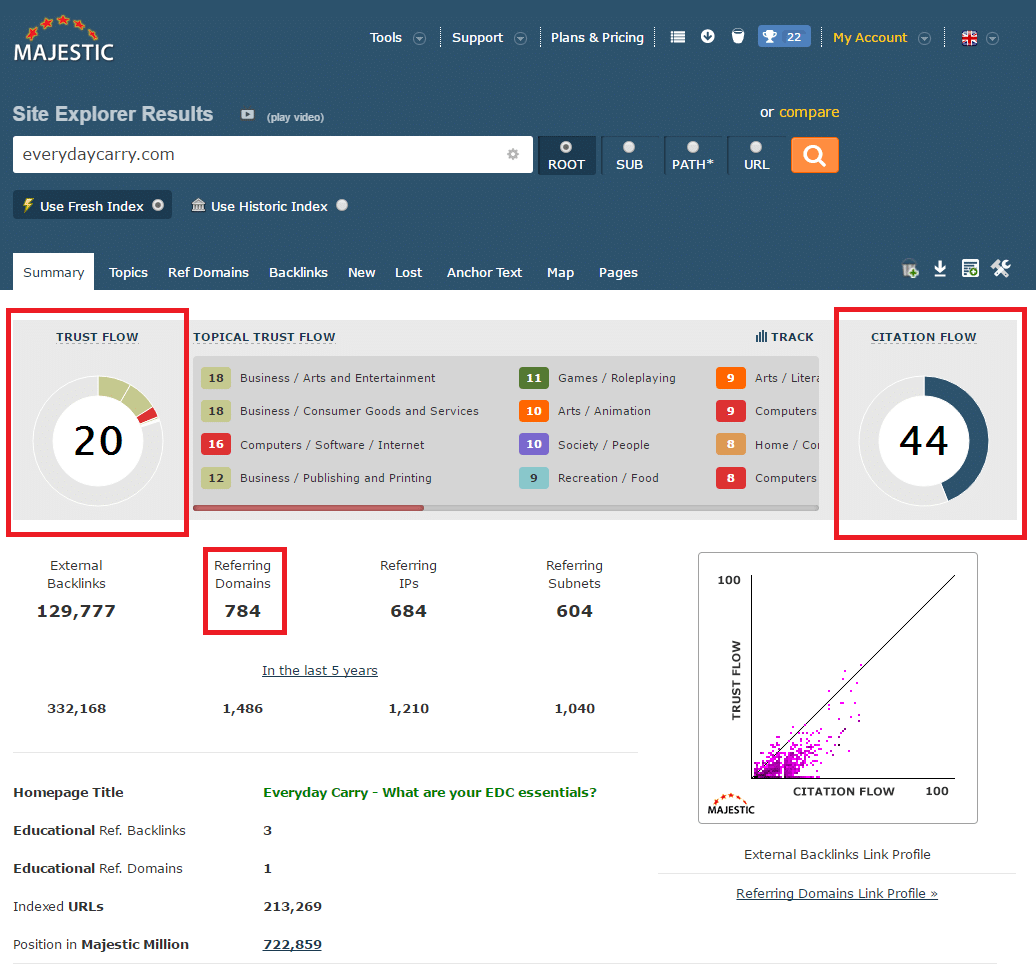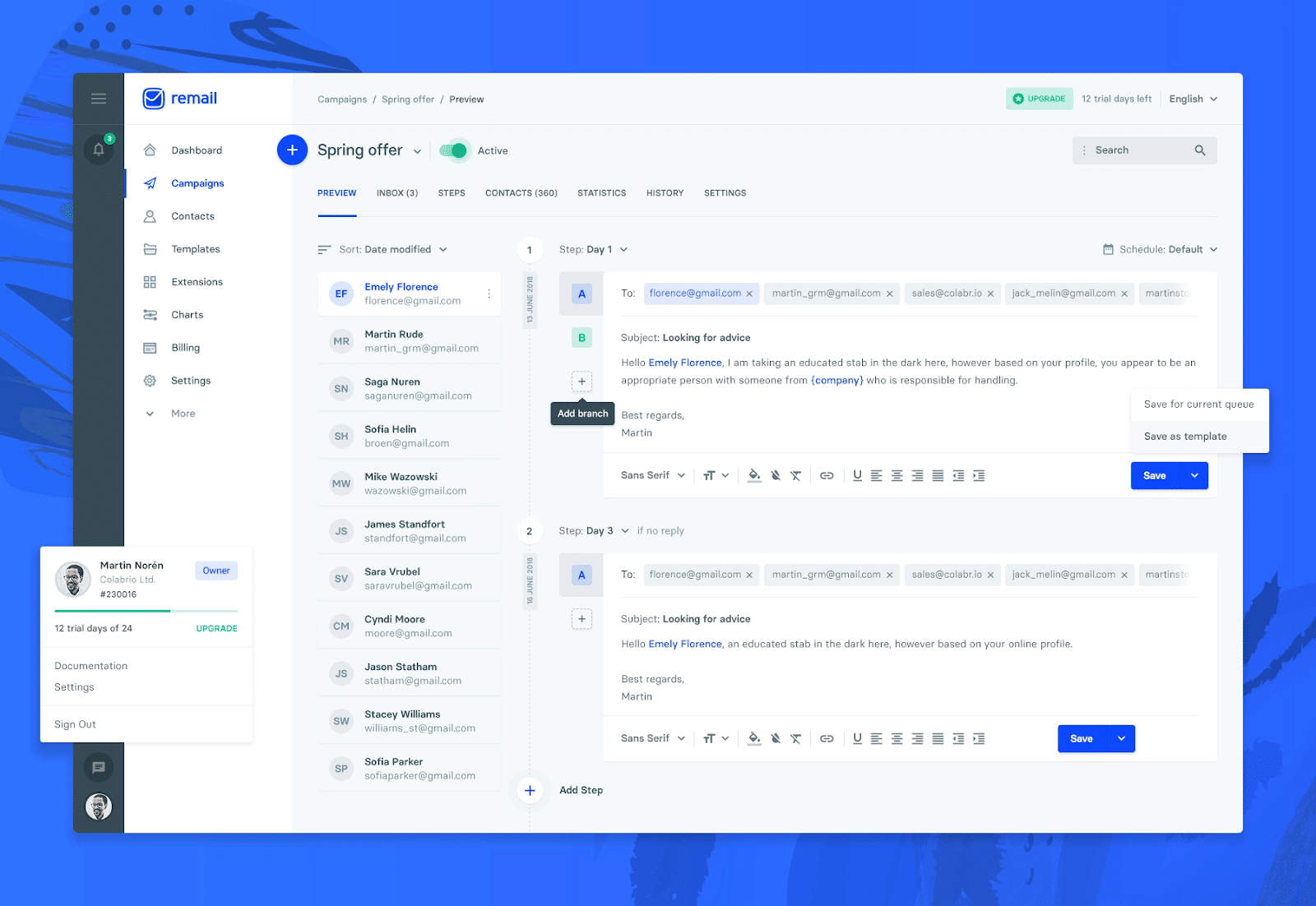How to Perform a Digital Marketing Audit
Personalization is becoming a cornerstone today for many brands that want to see the real effects of marketing efforts. Here conversational marketing enters the scene with a focus on interaction with users.
Conversational commerce is all about building a tight relationship with your audience by interacting with it from the moment a potential customer opens your eCommerce site. Thus, it is possible to highlight their needs and interact with them, taking this into account. Personalized interaction allows you to understand each specific client and is the main advantage compared to mass communication.
However, before integrating conversational marketing tools, you need to prepare your site and other digital marketing channels you use. First of all, we are talking about a comprehensive audit of digital marketing. This article will figure out how to properly conduct a full audit and what nuances to pay special attention to.
Why do you need a digital marketing audit?
A digital marketing audit will allow you to identify the strengths and weaknesses of your website, find optimization opportunities, and increase performance. Before you start setting up conversational marketing, you should definitely conduct a digital marketing audit, as it will help you with the following:
- Spot critical technical errors that will prevent the chatbot from working properly on your eCommerce site.
- Analyze usability to ensure your site is convenient for users.
- Identify the effectiveness of paid advertising for bringing your target audience.
- Check whether your brand strategy matches the real impressions your users get.
- Evaluate email marketing campaigns on the level of personalization.
Let’s take a closer look at what is included in a site audit and what you should pay attention to before implementing conversational marketing tools.
1. SEO audit

by dongkyu lim
As part of a digital marketing audit, SEO metrics are checked. After an SEO audit, you will find out what’s your site’s ranking in the search results, which queries you rank best for, which pages in the SERP bring you the most organic traffic, and whether your site is ranked for target keywords and match user intents. When users open your site, they pay attention to its content and usability, and chatbots play a secondary role to convert them into real customers. But if there is poor content or critical errors on the site, users won’t start a conversation with the chatbot and will just leave.
Thus, before implementing any conversational marketing tricks, you need to thoroughly check the health of your site and track particular SEO metrics to spot trouble in time. So, let’s dive a little deeper into what a thorough SEO audit consists of.
Tech audit
As part of a technical audit, the following issues are checked:
Crawling errors – robots failure, server errors, DNS errors, too long URLs that robots can’t read, etc. Run a consolidated site audit to get a technical SEO issue report. Such SEO tools simulate the behavior of a search engine crawler to detect those errors.

Indexing problems – misuse of noindex or nofollow tags, the presence of pages that are crawled but not indexed.
Duplicate pages – such pages with the same content may be perceived by Google as plagiarism and, accordingly, be lowered in the SERP. The audit allows you to detect such duplicates and remove them.
Redirect errors on pages – The audit allows you to identify pages with errors 3xx and 4xx and set up proper redirects or eliminate such pages.
UI/UX audit
A site that is ready to implement conversational marketing tools is a site with an understandable user experience, clear design, and easy user journey. You should make sure that your eCommerce site is not overflowing with different elements. Therefore, before introducing conversational commerce approaches, it is necessary to audit the following parameters:
Mobile-friendliness
More than 2.5 billion people use messaging apps on mobile and this number grows, according to Statista. Why not give them the ability to use a chatbot on your site or open live chat from their phone as well? But first, make sure that the mobile version of your site is well-configured. Use the Google Mobile-Friendly test to determine how well your site is performing regarding the mobile-first indexing algorithm. It is also important to check how the site is displayed on devices with different screen sizes and different browsers.
Site loading speed
According to Salesforce, 69% of users want to start a conversation with a chatbot when entering the site. But it is another script and another piece of code on your website that makes it load slower and increase a bounce rate. So, test the page loading speed before and after connecting a chatbot – the Google PageSpeed Insights can help you with that. It allows you to measure your loading speed and provides recommendations for improvements. Plus, make sure that your chatbot is loading asynchronously, and all actions connected with it are routed by external servers.
While performing the SEO audit, pay attention to the following issues:
Visual clues and CTAs – They should be easy to understand and visible. Make sure that all the most important elements on your site are clear and easy to click on.
Pop-ups and windows with live chat – These really matter in terms of conversational marketing and personalization. Determine the relevant pages (contact, about us, solutions/products), where it will be most appropriate and effective to place a chatbot for conversions. The pop-up window will only annoy users and trigger others to send you spam messages.
Content audit
Content is an important factor for both users and search engines. Actually, content is the king in the digital marketing kingdom. The content should “direct” the user to take the targeted action and convince the Google bot that your site provides expert and useful information. As part of the digital marketing audit, you need to pay attention to the following nuances:
Content engagement rate – Content should be interesting to readers and aim at increasing traffic and time spent on the page. Services like Grammarly will help you check text content for the engagement rate and tone of voice.
Onsite optimization – The use of SEO on the page should be competent, the number of keywords used should not be excessive. Otherwise, the search engine may lower the site in the search results. In addition, the key phrases used on the page should be relevant to the topic of the page. You can check keywords used and their density using the On-Page SEO Checker module in SE Ranking.
User intents – Make sure that pages meet specific user intents – informational, navigation, transactional, or commercial intents. Analyze the queries you use and LSI words. Intents matter both for SEO and conversational marketing since they bring target visitors that will see on your site exactly what they were looking for. Plus, selected intent-based keywords can be used in chatbots platforms to anticipate users’ questions.
In addition, the content must meet a specific goal – for example, for eCommerce sites, it’s usually to guide the user through the funnel and result in conversions. Therefore, it is important to optimize your content accordingly for effective digital marketing. Any funnel consists of three main stages:
Awareness (TOFU) – You need to provide information about the product, get users interested, and weed out those who will not become your client in the long term. User awareness can be increased by informative articles and lead magnets – free books, templates, checklists, and more.
Review (MOFU) – Here you need to focus on the “pains” of the audience. Advanced content works effectively on this stage – videos, podcasts, webinars, etc.
Decision (BOFU) – You need to show that your product really has the edge over the competition. For example, a presentation or a free consultation can help with this. You can also make special offers – promotions, discounts, etc.
Backlink audit
To get higher in search results, you need to consistently receive backlinks from donor resources; this increases the authority of your site in the eyes of Google. However, the backlinks you get should be reliable, and their number should grow over time. After conducting a backlink audit (you may use the Majestic tool for that), you will get the following information:
Your domain and page trust – This indicator is calculated using a special formula. If your site’s score is below 50, it may be downgraded as unreliable. To raise the score, you need to remove backlinks from sites with a bad reputation and gradually increase the number of backlinks from more reliable platforms.
Quality of sites that link to you – Pay attention to their domain trust – if it’s low, it’s better to ask for the link to be removed or disallow.
The total number of links that link to your domain – It is important that the link mass does not decrease and does not grow too sharply – this process should be gradual.
New and lost backlinks – This will allow you to track whether unsolicited toxic backlinks appear, as well as whether backlinks you agreed on with donor webmasters have disappeared.
Anchors – The keyword or phrase used with the link must be relevant to the topic of the page being linked to.
Nofollow link – Links with the “nofollow” tag don’t let robots index your page. Therefore, it is important to maintain a dofollow/nofollow links ratio at approximately 60/40.
In addition, it is important to check the correctness of the internal linking on the site. If the pages are linked correctly, it is easier for the users to navigate on your site, they can easily find the necessary information and make a purchase decision without contacting support. If the user is “stuck” in a section and support is offline, this can lead to a bounce.
2. Brand audit
For digital marketing to be effective, you need to make sure that your positioning and promotion are not a waste of time. A brand audit must figure out whether people trust your brand no matter what. With its help, you will find out the following information:
Product positioning – Explore how you differ from other similar products or services, and how your audience perceives you.
Customer focus – Define what is your target audience, the customer persona, and whether this data corresponds to your original digital marketing strategy.
Consistency across channels – Make sure your users are getting the same information about your brand across all the channels you use to promote, and that the information they get via different channels is not conflicting.
Product value and unique selling proposition (USP) – Make sure that you are correctly defining and presenting the benefits of your product. Think of what your USP is and whether you can describe it in a few words.
Call to action. Define whether the CTAs you use are effective and converting.

by Filip Justić
If you identify any contradictions in the brand strategy and promotion, these shortcomings must be eliminated immediately, otherwise, conversational marketing will not bring you needed results. This approach is just about closer communication of the brand with target customers and it adds to service value. Without a strong brand strategy, conversational marketing may lead to losing investments.
3. PPC audit
The combination of paid advertising and conversational marketing can be very effective because a chatbot can dispel the doubts of the person who got to your landing page from advertising and bring them to the purchase. If you run paid ads, then it is worth conducting a PPC audit before connecting the chatbot. Here you need to pay attention to the following features:
The target audience – Properly configured advertising allows you to focus your budget exclusively on the right segments of your target audience. Thus, you get more ready-to-purchase visitors and a higher conversion rate. So, the targeting settings directly affect the performance of your advertising campaign.
Keywords and phrases – When choosing keywords for your PPC campaign, you should consider search volume, match type, and negative keywords to make it more targeted and thus effective.
Landing pages – Here you need to make sure that the ad is relevant to the topic and fully corresponds to the offer on the landing page.
There are five main metrics you can use to analyze the effectiveness of your ad campaign:
Quality Score – It is a measure of the relevance of your keywords based on the following factors:
CTR shows whether your keywords and ads are relevant to users who are looking for something using the corresponding search query;
- The relevance of the keyword and ad to the search query;
- The relevance of the keyword to the ad group;
- The quality of the page the ad leads to.
Conversion Rate – It displays the number of users who, after clicking on your ad, performed a targeted action. The value of this metric is the same as that of CTR since you, as an advertiser, are not interested in paying for ads without making a profit. Each click is your expense, and the profit you get comes only from targeted actions.
Cost Per Conversion – This metric shows how much your ad is paying off. In other words, it estimates how much one lead costs you. If you have to pay for advertising more than you earn from the ad campaign, you have not achieved a positive ROI.
Wasted Spend – This metric is for money that has been spent without profit. This way you will find out how much is spent on clicks that do not result in conversions. If the Wasted Spent rate is high, you need to filter the traffic. For example, use negative keywords – this way, you can reduce the number of non-converting keywords that do not correspond to the topic of the advertising campaign.
4. Email marketing audit
Once, email marketing was one of the most effective types of online promotion. Today, however, Campaign Monitor reports that the click-through rate for mailings is about 2.60%, an average number in digital marketing.
One of the biggest problems with email marketing is that marketers are pushing customers through many sub-funnels. Open the email, click on the button, go to the landing page, fill out the form, get confirmation, and finally don’t forget about the webinar in a week. This is far from what one would call effective communication with a client. In fact, not everyone even reaches the first stage – only about every 5th client of yours opens letters you send.
The solution is personalization, which allows for better customer engagement. However, before implementing conversational marketing, you need to make sure that the email marketing campaigns are set up correctly:
Segmentation – If users get more personalized emails tied to their current needs, they will be much more engaged and convert better. Set the segmentation correctly taking users’ interests, recent purchases, stage of the funnel, geo, and other indicators into account.
Content – Ensure your emails are easy to read and consistent. All clickable elements, links, and buttons should work. Write the text for your emails based on the target audience for which it is intended.
More personalized emails built with the BLUF concept in mind (bottom line up first) invite users for conversations instead of simply clicking on advertising CTAs. Stick to highlights in your letters, offer some major deals to reconsider your service or product, and buy it right now. And always finish your emails with an offer to continue the conversation.
It is also important to monitor the effectiveness of the email marketing campaign. You can track them in any email marketing services you use. The main SEO metrics are as follows:
Open rate – If users don’t open your emails, the problem may lie in the subject line or the first line of the email. Make it more personal and engaging.
Bounce – The average rate is 10%. If more, your content does not meet the expectations of the target audience, or there are layout problems.
CTR – The average CTR for email marketing is 8%, which means that only 8% of all your subscribers enter the sales funnel from the email marketing campaign.
Conversion – As of 2020, the average conversion rate was 15%. You need to work on emails to ensure that as many users as possible take the targeted action.
Unsubscribed – The optimal indicator is 0.01% -0.02%. If there is much more, you have serious problems with the mailing list.
Summary
Conversational marketing is a more modern approach to digital marketing. Each client has its own specific needs, and if you manage to hit their “pains”, the chances of success increase.
However, before implementing chatbots, live chat, or any other conversational marketing tool on your site, it is necessary to audit it thoroughly. It is important to make sure that your promotion strategy works, the site is ranked high, and your offers and advertising are targeted at a specific audience and meet its requirements. Well-conducted audits provide critical insights into technical and other errors that should be corrected so you can move to conversational marketing and get better results.
Sell more, understand your customers’ journey for free!
Sales and Marketing teams spend millions of dollars to bring visitors to your website. But do you track your customer’s journey? Do you know who buys and why?
Around 8% of your website traffic will sign up on your lead forms. What happens to the other 92% of your traffic? Can you identify your visiting accounts? Can you engage and retarget your qualified visitors even if they are not identified?








